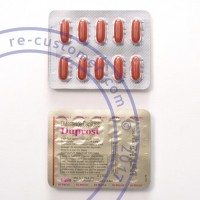Which Treatment is Best for Enlarged Prostate?
- 18 April 2023 09:40:59
- Views: 1986
Enlarged prostate, also known as benign prostatic hyperplasia (BPH), is a common condition that affects many men as they age. It can cause bothersome urinary symptoms such as frequent urination, difficulty starting and stopping urination, weak urine flow, and a feeling of incomplete emptying of the bladder. There are several treatment options available for enlarged prostate, ranging from lifestyle changes to medications and surgical procedures. In this article, we will discuss some of the treatment options for enlarged prostate, their benefits, and considerations to help you make an informed decision.
Lifestyle Changes
For mild to moderate cases of BPH, lifestyle changes may be the first line of treatment. These changes may include avoiding caffeine and alcohol, drinking plenty of water, emptying the bladder completely when urinating, and practicing "double voiding" (urinating twice in quick succession to empty the bladder more completely). Other lifestyle changes may include regular exercise, maintaining a healthy diet, and managing stress. These changes may help improve urinary symptoms and overall prostate health, but they may not be sufficient for more severe cases of BPH.
Medications
There are several medications that can be prescribed to manage the symptoms of an enlarged prostate. Alpha-blockers, such as tamsulosin and terazosin, work by relaxing the smooth muscles in the prostate and bladder neck, which can improve urine flow and relieve symptoms. 5-alpha reductase inhibitors, such as finasteride and dutasteride, work by reducing the size of the prostate gland by blocking the conversion of testosterone to dihydrotestosterone (DHT). Combination therapy, which includes both alpha-blockers and 5-alpha reductase inhibitors, may be prescribed in some cases to provide more comprehensive symptom relief. However, medications may have side effects, and their effectiveness may vary from person to person.
Minimally Invasive Procedures
There are several minimally invasive procedures that can be used to treat an enlarged prostate. These procedures are typically performed on an outpatient basis and may involve the use of heat or other energy sources to remove or shrink excess prostate tissue. Some examples of minimally invasive procedures for BPH include transurethral microwave therapy (TUMT), transurethral needle ablation (TUNA), and prostate artery embolization (PAE). These procedures are generally safe and effective for relieving urinary symptoms, with less risk of complications compared to traditional surgery.
Surgery
In cases where the prostate enlargement is severe and other treatments are not effective, surgery may be recommended. There are several surgical options for treating BPH, including transurethral resection of the prostate (TURP), laser prostatectomy, open prostatectomy, and robotic-assisted prostatectomy. These procedures involve removing or reducing the excess prostate tissue to improve urine flow and relieve symptoms. While surgical interventions may be highly effective in treating BPH, they are typically associated with more risks and longer recovery times compared to other treatment options, and are usually reserved for cases that do not respond to other treatments.
Considerations and Conclusion
The choice of treatment for an enlarged prostate will depend on the severity of the condition, the individual's overall health, and personal preferences. Lifestyle changes and medications may be sufficient for managing mild to moderate cases of BPH, while minimally invasive procedures or surgery may be necessary for more severe cases. It is important to discuss the available treatment options with a healthcare provider, consider the potential benefits and risks of each option, and make an informed decision based on individual circumstances. Some additional considerations to keep in mind include the potential for side effects or complications associated with medications or procedures, the cost of treatment, the expected recovery time, and the impact on quality of life.
In conclusion, the best treatment for an enlarged prostate will vary depending on the severity of the condition, overall health of the individual, and personal preferences. Lifestyle changes and medications may be effective for mild to moderate cases, while minimally invasive procedures or surgery may be necessary for more severe cases. It is important to consult with a qualified healthcare provider to determine the most appropriate treatment approach for an individual's specific situation. With proper medical guidance, most men with an enlarged prostate can find relief from their urinary symptoms and enjoy improved quality of life.




